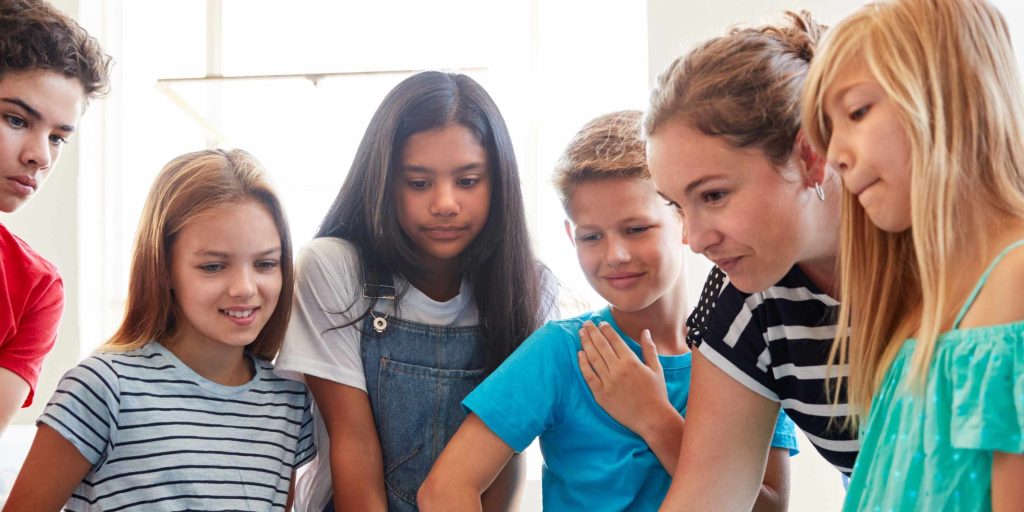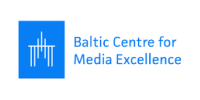The golden tasks of MIL rely on discovery, lived experiences, and reflection

Maria Murumaa-Mengel
27.04.2023
Teaching media and information literacies can be an overwhelming task – so much to cover, so many topics, and so different unique media worlds. We asked teachers what really works, and what are the “golden tasks” that they swear by?
Of course, we have general frameworks and models (check out the UNESCO ground document for teaching MILs), national curricula and textbooks, various repositories and toolkits developed by short-term projects, etc. But what about teachers’ subjective opinions and extensive experiences? We asked our BECID teaching crowd one simple question – what is a study task, activity, or tool that works just amazingly? Qualitative answers came from teachers of specific subjects and media classes, youth workers, young journalists, youth project facilitators, and higher education faculty.
Familiar media, unexplored paths, unfamiliar me
Three general approaches seem to be popular, as they echo throughout the examples that educators talk about – media texts have to be relevant and familiar to the students; learners have to have Aha!-moments; and there has to be time for reflection.
First, there is no point in teaching media genres that feel completely alien to the young – their information flows simply do not follow the patterns of traditional journalistic media. Examples of familiar media texts that teachers brought included fact-checking TikToks and YouTube shorts, inspecting the visual materials that have gone viral on various platforms, tracking down brand shout-outs and unmarked sponsorships in social media content.
But obviously, it does not mean that we need to stick to just youth cultures and genres – MIL is supposed to expand horizons, spark interest in the unexplored. Young journalist and media activist Angelina Lon has noticed that teens like tasks where they can figure something out or offer solutions to a problem. This approach rewards the learner with discoveries, outlets for creativity, and a task-oriented focus. Science communication specialist Merli Vajakas from Tallinn University has used a task that can be referred to as “Mediahouse Detective”. Tracking down which media channels belong to the same corporation, to make invisible ties and connections visible is useful in many ways – from search skills to planning the reach of their own campaigns. Mirjam Paales, a junior lecturer in informatics at the University of Tartu brings the principle to a micro-level and uses a “Google Thyself”, a sort of a looking-glass task with her students: “And then we discuss, does this feel like you? Like someone you would like to be seen as? Who could have this first impression of you?”.
And finally the self-reflection: in a way, we are strangers to ourselves, needing time and effort to analyze our thoughts, behaviors, and attitudes. Agnese Dāvidsone, rector of Vidzemes Augstskola and a media scholar has emphasized the importance of neurocognition, in other words – understanding how our brains work. “Cognitive and social schemas explain the perception of misinfo, we rely on heuristics and are influenced by our personality traits,” explains Dāvidsone the reasoning for using self-analysis as the basis of teaching MILs.
All sorts of disconnection tasks can help self-reflection, as becoming a “have-not” helps us explore the depth and overlap of our belonging to the “want-nots” group. In other words, to notice the role of invisible social media in our lives, we need to take it away for a while. For example, by asking students to steer clear of social media for X days and to keep a diary of their “trials and tribulations”, we will get a chance to discuss several topics: rituals and routines we have with social media, functions of various platforms, possible substitutions, passage of time, emotions experienced, positives and negatives, etc.
Manipulator wolves and singing bears
What about the youngest age groups? Media literacies expert Emīls Rotgalvis from Latvian National Library described playful approaches designed for children: “One of the leading Latvian tech companies has made a program where teachers can find ready lesson plans, tasks, and videos. They all feature a currently very popular children’s character bear Richy Roo, who leads these lessons and sings songs about internet safety.” Rotgalvis pointed out that animal-centered solutions have worked wonders in Latvia before. For example, a popular Latvian children’s book is called “Gotcha! The wolf-manipulator”, which is a fairytale about animals, who are talking about actual media-related issues.
Curious forest animals make an appearance in discussion-starter videos used in Lithuania, too. Auksė Balčytienė, Chief Investigator of the DIGIRES project recommended these for younger age groups, as initial test rounds show great interest in such materials.
Inger Klesment, a media educator from Estonian who also focuses on the youngest age groups, describes a “must have game” for every teacher: “I think there is great versatility with these soft pocket cube dices, for example, I discuss cyberbullying with the aid of the soft cube.” The pictures and texts are interchangeable, you can throw or turn this object around and it creates a tactile element to a digital topic. “It is super-interactional, as the kids voice their opinions, the teachers listen and everybody learns from each other, ten out of ten, would recommend!”, adds Klesment.
Creative imaginaries
Young Estonian journalist Angelina Lon has taught and led student groups in several media camps and she values tasks that have a creative component: “I got them to imagine different solutions, pathways to make their school the most media literate school in the country. How could this be done? How real and doable are these plans? Worked wonderfully and was really entertaining.”
Pille Pruulmann-Vengerfeldt, an Estonian who works at Malmö University as a professor in media and communication, vouches for a role-play task about media technologies, introduced to her by Susana Tosca, professor in University of Southern Denmark. Good ideas are truly viral, as we can see! “Imagine you are colonizers on a new planet, we have managed to ruin Earth and moved on, to a fresh start. So now we have a new opportunity to reinvent media and technology! I will assign topics (democracy, entertainment, intimacy, etc) but also different secret roles, to make it interesting – techno enthusiast, a Luddite, a neutral observer.”
Comparing and connecting
Many tasks that were described were based on comparison – comparing different generations’ media habits; the content of evening news on different channels; moral panics about technology; one event in several newspapers; personalized social media environments. Some teachers approach the comparison in a free form, some offer thorough analysis matrixes and structure for their students.
When students compare their own results and thoughts, they will quickly see how media worlds can differ immensely – so that’s why we understand the world so differently!?! But such comparisons are also great for emphasizing similarities and noticing biases in the larger system. For example, heavily biased media representations do not necessarily need to be on the covers of newspapers, they can also be found in social media and Google searches. One example was from a university course on violence – what do you see when you search images on “child sexual abuse”? Why is this the representation? Whom does it harm? Why does it matter, what influence can it have?





